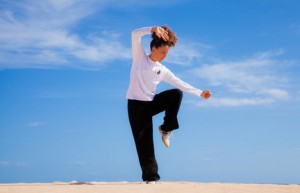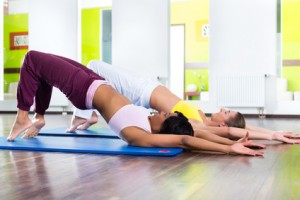Tai Chi, as it is practised today, is a combination of a moving form of yoga and meditation. In Tai Chi there are a number of so-called ‘forms’ or ‘sets’ which consist of a humber of movements.
Many of these movements were originally derived from martial arts and from the natural movements of animals and birds. These movements are performed slowly and gracefully, with smooth, even, transitions between them.
In Chinese philosophy and medicine there exists the concept of ‘chi’, a vital force that animates the body. The aim of Tai Chi is to foster the circulation of this ‘chi’ within the body to enhance health and vitality. Another aim is to develop a calm and tranquil mind focused through the precise execution of Tai Chi exercises.
Lots of useful books here tai chi


